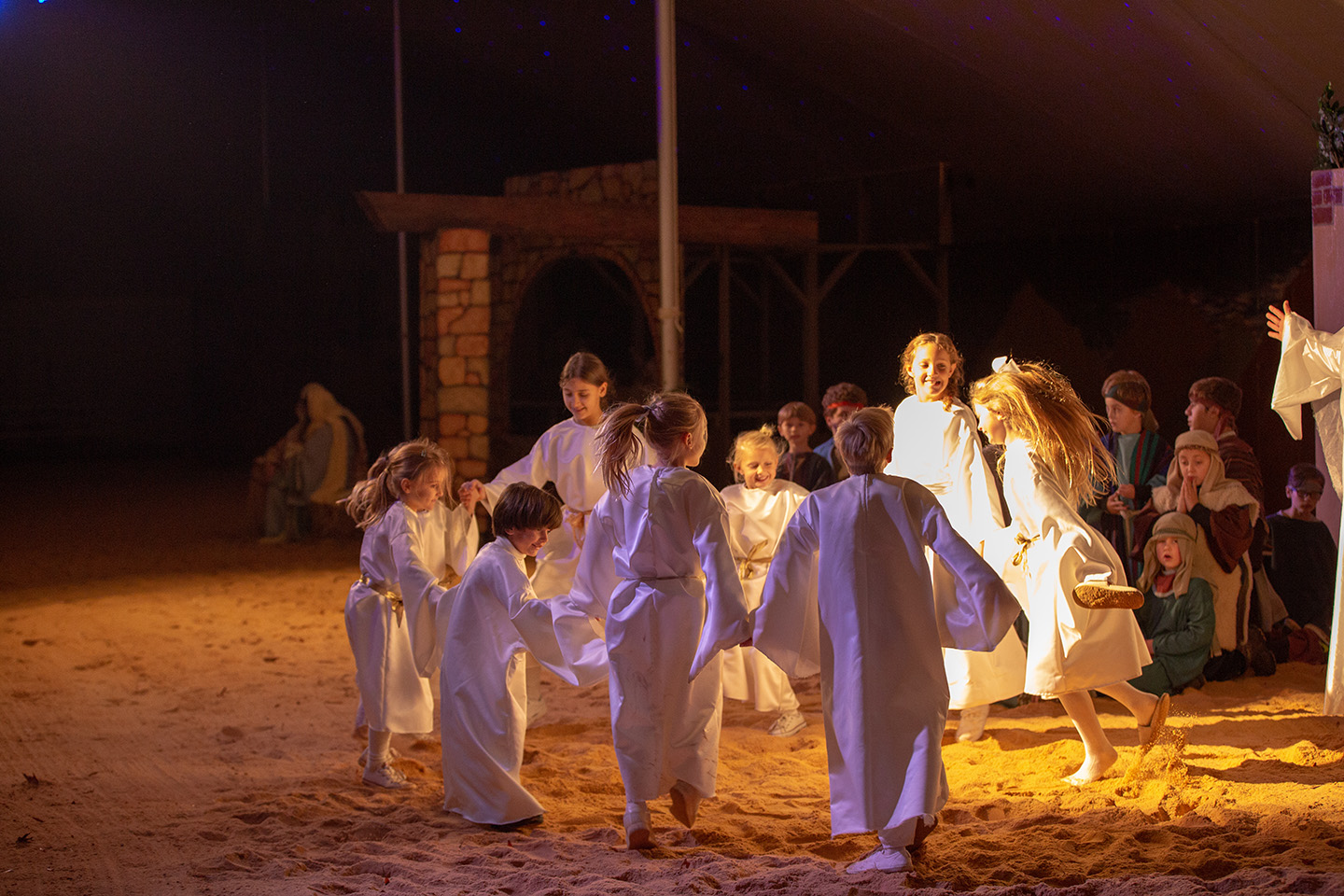O Holy Night
By Corey Latta | Photography courtesy of Germantown Baptist Church

During the Christmas season, churches around the South bring to life the manger scene described in the Holy Gospels.
The need for visual aids wasn’t lost on St. Francis of Assisi, the Italian Catholic friar who became the patron saint of animals and nature. St. Francis is believed to have been the first to propose the idea of “animated props” to teach the story of the birth of Jesus. Many miracles are attributed to St. Francis, and his idea that became a worldwide phenomenon should be counted among them.
This holiday season, churches around the world will recreate the scene as a gift to their communities, including these established denominations in Tennessee and Mississippi.
Longview Heights Baptist Church
4501 Goodman Rd.
Olive Branch, Mississippi
Dec. 6-8
We can experience a little something of Bethlehem in Olive Branch. For a fourth year, Longview Heights Baptist Church will host its Living Nativity. With the help of more than 200 volunteers, Longview Heights will present a 12-scene narrative nativity that begins with the Old Testament prophet Isaiah’s foretelling of the Messiah’s birth and concludes with the empty tomb.
Visitors will be immersed in Longview Heights’ living nativity, peopled by tax collectors and census takers, populated by sheep and chickens in the marketplace, and Mary and Joseph with requisite donkey.
The great care behind this production doesn’t come without interesting anecdotes. Once, a trailer that housed hinges, nuts, bolts, ladders, and tools used for constructing sets was stolen right off the church lot only to turn up outside of town with the name scratched off. But Bethlehem still endures.
Liz Jennings, director of Longview Heights’ nativity, believes in the power and purpose of staging the event. “We love offering our community this. It means a lot to the many people.”
Germantown Baptist Church
9450 Poplar Ave.
Germantown, Tennessee
Dec. 6-8
Germantown Baptist Church is pretty far removed from an Italian cave, but the scene remains. For 30 years, GBC has presented a living nativity.
“The living nativity is our gift to the community,” says Recreation Pastor John Longworth.
Visitors are welcomed to a replica of a Bethlehem village before entering into a tent that houses the living nativity. Visitors enjoy refreshments, kids enjoy a petting zoo, and everyone enjoys the warmth of a heated canopy while they wait their turn for the performance, which in St. Francis fashion, includes three camels, donkey, and sheep.
The 15-minute program is scheduled every 30 minutes. Approximately 3,000 to 5,000 people annually witness this visual depiction of the nativity.
“This has always been something special we’ve done for the community,” Youth Minister Lynn Thompson says. Lynn was a part of that original youth group that started the living nativity.
Along with Joseph, Mary, and an infant Jesus, visitors also will find the church’s youth dressed up as wisemen and shepherds. But they won’t see any live animals around this stable. Livestock haven’t always stuck to the script. In years past, the goats ate the shepherd’s costumes, and the donkey decided to just stop walking halfway down the street to the manger.
So, while you won’t find animals, not real ones anyway (the sheep are now played by kids), you will find a lot of heart. And not unlike those who came to St. Francis’s cave, visitors pause to reflect. “People can stop and see the love of God,” Lynn says, “people can even stop to see Santa kneeling in the manger.”
Something about a Stable
C. S. Lewis once said of the birth of Christ in the manger, “once in our world, a stable had something in it that was bigger than our whole world.” This paradox of belief, that a manger might contain what the universe can’t, has found its place into the festive fixtures of Christmas traditions.
The scene is familiar: Joseph, Mary, an infant Jesus, a few wisemen, and hopefully some livestock. All staged in familiar form, posed out front of local church. These live action versions of the historical account of Jesus’s birth find their inspiration in the biblical narrative. Of the four gospels, two, Matthew and Luke, give accounts of Jesus’s birth. But it’s Luke who lays out the script for today’s live depictions:
“And there were in the same country shepherds abiding in the field, keeping watch over their flock by night. And, lo, the angel of the Lord came upon them, and the glory of the Lord shone round about them: and they were sore afraid. And the angel said unto them, Fear not: for, behold, I bring you good tidings of great joy, which shall be to all people. For unto you is born this day in the city of David a savior, which is Christ the Lord. And this shall be a sign unto you; Ye shall find the babe wrapped in swaddling clothes, lying in a manger.” (2:8-12).
It took a millennium or so after Luke’s account to bring us living nativities as we now enjoy them. The dramatic bridge from biblical text to modern presentation was actually built around 800 years ago by St. Francis of Assisi. St. Bonaventure, a French monk born shortly after St. Francis’s death, writes in his biography of Francis that the Saint of Assisi proposed the idea of setting up a manger, complete with hay, one ox, and a donkey, in a cave in the village of Grecio.
The presentations varied, the cast expanded to include Joseph, Mary, baby Jesus, and perhaps a shepherd or wiseman or three, but St. Francis’s intent, faithful to the gospel writers before, has stood the test of time.

